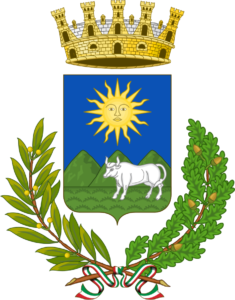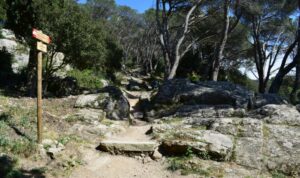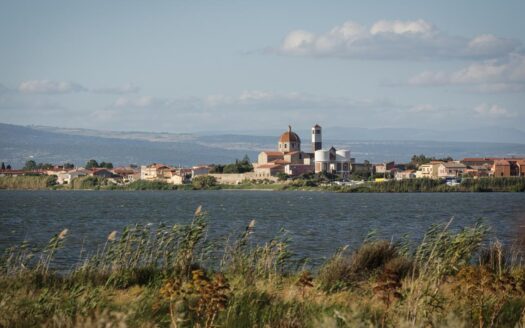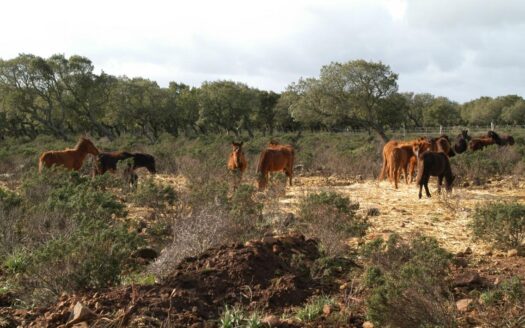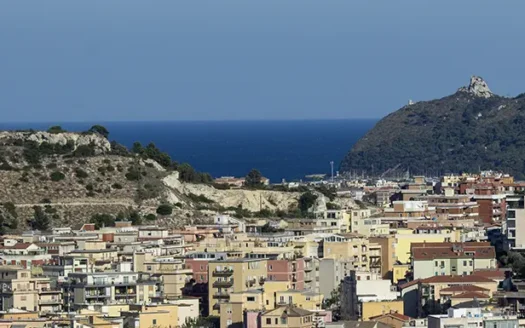Nuoro, tradition, art, and culture
Museums and art centres in fascinating and perfectly preserved historic neighbourhoods. Nuoro, the most populous centre of Barbagia, is a town of tradition and culture.
Situated on a rocky ridge at the foot of Mount Ortobene, Nuoro is the third most important Sardinian town, after Cagliari and Sassari. Recently developed, in the 16th century it was little more than a shepherds’ village and so remained until the mid-19th century.
From then on, Nuoro became a sort of “Sardinian Athens”. Animated by a lively cultural ferment, the centre acquired fame with artists and writers such as Salvatore and Sebastiano Satta, Francesco Ciusa and Grazia Deledda, winner of the Nobel Prize for Literature in 1927.
Town centre
Walking through Nuoro old centre is like taking a dip into the past. Narrow cobblestone alleys, ancient stone houses, courtyards, porticos and small squares open up almost unexpectedly.
Corso Garibaldi, once Via Majore, has always been the hub of Nuoro social life, with historic cafés and various artisan workshops specializing in woodcarving, weaving and goldsmithing in perforated gold leaf.
Historic districts
Séuna was once home to farmers and artisans. Santu Pedru was home to shepherds and landowners. Here you find the museum, of Grazia Deledda, the birthplace of the writer, who today rests in the little church of Solitudine at the foot of Ortobene.
Churches
In the omonimous square in the old centre you find the Cathedral of Santa Maria della Neve, designed in 1836 by the friar-architect Antonio Cano. While the 17th-century Church of the Grazie and the Sanctuary of the same name are located in Piazza delle Grazie.
Museums
Nuoro is also home to important museum institutions: The Museum of Sardinian Popular Life and Traditions, the National Archaeological Museum, the MAN Museum of modern and contemporary art.
Monte Ortobene Park
Ortobene is the mountain of the people of Nuoro, “our soul”, as Deledda called it. Rivers to the north and south and valleys with pre-Nuragic evidence frame a landscape and naturalistic heritage of rare value.
Cuccuru Nigheddu is its peak (955 m), a panoramic point from which the gaze ranges from Monte Albo to the Orune plateau. Various viewpoints offer views of Monte Corrasi in Oliena, towards the Supramonte, the Gennargentu and the sea.
The flora and fauna are typical of central Sardinia, with forests of holm oaks and cork oaks, foxes, wild boars, dormice, hawks and even a pair of golden eagles.
Finally, some sites are special for various curiosities.
Sedda Ortai, for example, is known for Sa Conca, an enormous mushroom-shaped rock inside which a sheepfold has been carved out. The Redentore, on top of the mountain, is dominated by the statue signed by Vincenzo Jerace (1901) and is the destination of the procession of the Sagra del Redentore every year at the end of August.
Distances
The closest airport to Nuoro is in Oristano, but it is also possible to land in Olbia and reach the town by bus. The closest port is in Olbia, just over 100 km to Nuoro. Nuoro is approximately 140 km to Porto Torres, 150 km to Alghero, and 175 km to Cagliari airport.
Beaches in the province
The province of Nuoro offers not only mountains, but also beautiful beaches.
Cala Fuili: a staircase carved into the rock and a path through the thick forest of Mediterranean shrubs opens onto a small, uncontaminated and panoramic beach, in the territory of Dorgali, not far from the Bue Marino Caves. The seabed is shallow and the incredibly transparent sea has shades ranging from green to turquoise.
Cala Luna
an unparalleled corner of paradise halfway between Dorgali and Baunei. The narrow and elongated shape of the beach and the light sand contrasting with the turquoise colour of the crystalline sea explain the name of the place. The various caves that follow one another along the beach frame this amazing picture.
Bérchida Beach
a parallel universe of peace and beauty in the protected area of Berchida and Bidderosa, in Siniscola territory. A system of dunes separates and protects this beach from the hinterland, creating an effect of isolation from the rest of the world. The whiteness of the sand contrasts with the turquoise of the sea and the green of the lush Mediterranean vegetation and the centuries-old junipers.
Capo Comino Beach
in the territory of Siniscola, a stretch of white sand with enormous dunes behind, among the largest on the eastern coast. A wide and long beach that forms a single coastline with s’Ena ‘e sa Chitta “the beach of confetti”. The “cape” is guarded by an ancient lighthouse in front of the small island Ruja. The red porphyry of the islet, the blue shades of the clear sea and the green of the vegetation blend in a place where nature is the absolute protagonist.
Su Tiriarzu Beach
a seaside hamlet of Posada, the historic capital of the Baronia. It owes its name to the flat seabed that resembles, in fact, a terrace. The rough and multi-coloured sand joins a crystalline sea. The dunes separate the wide beach from thick vegetation with pine trees and sea lilies that surrounds coastal lakes, separating the beach from the road that leads to the village.
Click here for the official site of Comune di Nuoro
click here for touristic info about Monte Ortobene




